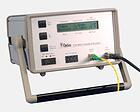As a provider of Optical Modulation Index (OMI) Instruments used for optimizing laser transmitter performance, our organization has the opportunity to work closely with many of the talented technicians and engineers at the leading CATV operators around the world. As a result of the many discussions related to both the importance and use of OMI for maximizing system performance, there have been a number of consistent topics we have seen regarding the deployment of transmitters in the network.
One question that always comes up from engineers when discussing why they need to use an OMI instrument is: "When I purchase a new transmitter from our vendor, shouldn't it already be optimized for maximum performance? " In theory this is correct, but in reality, this is not often the case when it is deployed, due to a number of variables. This is not to say that the transmitter you purchased is not a great device, as there are many models available from the most reputable vendors that deliver high quality equipment. However, there is almost always room for improvement, from an optimization perspective, to get the most out of that particular transmitter.
Variables That Can Lead to Non-Optimization
Before a laser or transmitter is shipped, it goes through a number of processes and specification-setting procedures. All of these procedures are prone to inaccuracies that, in the end, can and often add up to a major shift in performance.
Laser OMI is determined and specified by the laser manufacturer
Variable - manufacturers typically use un-modulated carriers
Variable - manufacturers set the specification using a specific number of channels, which is almost never the exact channel setting of the end-user, given that every live network is unique in terms of total channel counts, analog-to-digital ratios, etc.
Lasers are purchased and installed by the transmitter manufacturer
Variable - laser driver circuits introduced between the input and laser
Variable - transmitter manufacturers typically use un-modulated carriers
Variable - transmitter manufacturers typically do not openly divulge the OMI for the device. Usually the RF per channel level necessary to drive the transmitter is given. Since manufacturers want to ensure the transmitter will work for a variety of scenarios in each unique CATV network, this provides a buffer for any variations normally encountered in manufacturing optical equipment.
Transmitters sometimes have front panel “set up” indicators
Variable – the circuit tolerances can cause the OMI setting window to shift, becoming smaller or larger, and thereby allowing the OMI setting to have a fairly wide range
The final result is that the user sets the RF input level for the number of channels used. This may be a change from the original OMI/channel setting. With modulated carriers and all of the above other variables, the setting is almost certain to not be optimal.
In fact, in most deployments where the FOS 1000A OMI instrument has been used for the first time, the majority of laser transmitters are under-driven, with a total OMI value in the 13 to 17 range. A good DFB laser that is optimized typically results in a total OMI value in the 19 to 25 range. In these cases, while the under-driven total OMI value may be a "safe" number, there is a lot of room for improvement in terms of achieving the best performance from your lasers.
Since you have made the investment in a high quality laser transmitter, it only makes sense to take the extra step to maximize their value. A healthy system leads to happy subscribers, which is a key goal of any CATV operator.
Learn More About OMI & Optimizing Laser Transmitters:
 |
Technical Whitepaper - "Defining OMI" |
 |
FOS 1000A OMI Instrument |





